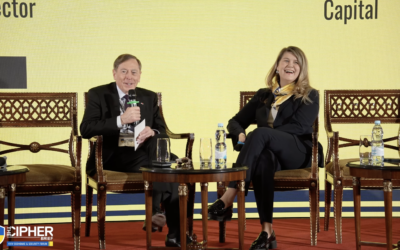
At Kyiv Summit, a Case For Investing in Wartime Ukraine
SUBSCRIBER+EXCLUSIVE INTERVIEW — While Ukraine deals with shortages of troops, munitions, and equipment for its air defenses, some Ukrainians are teaming up with foreign investors […] More
Technological advancements in the past 30 years have in many ways democratized access to information and disrupted countless industries – from journalism to national security.
Increasingly, intelligence-rich assessments are being made by non-intelligence professionals. Consider the 20-year-old Australian student who revealed the pattern of life on U.S. military bases, simply by analyzing GPS-tracking company Strava’s published heat map of fitness tracking devices; or the work by researchers at the Middlebury Institute of International Studies to confirm a North Korean solid-fuel mission engine test by using open source technology.
Organizations such as Bellingcat and The Citizen Lab are bringing creativity, focus and rigor to open source material and delivering results that can easily be labeled as open source intelligence (OSINT).
The rise of citizen investigative journalists leads inevitably to the emergence of citizen intelligence officers, who bring their full suite of skills and tools, coupled with an ability to tap into global talent virtually, to address today’s most complex intelligence questions. So, how can traditional open source intelligence professionals compete in what is quickly becoming an environment in which non-intelligence individuals and organizations, with quite different motivations and objectives, are also participating? More importantly, what does this mean for U.S. intelligence community’s ability to maintain strategic advantage in the open source world?
When I began my open source career at the former Foreign Broadcast Information Service (FBIS) in the mid-80s, there was no real external competition to the organization and its signature product, The Daily Report, which was revered by intelligence professionals and academics alike.
With the rise of CNN and other 24-hour news cycle-platforms, open source professionals felt the heat of being erroneously compared to news media, enduring quite pointed questions about the necessity of this intelligence capability.
Today, however, there is a greater appreciation for and understanding of OSINT, especially in terms of the sophisticated tradecraft that is required to effectively operate in the increasingly complex and dynamic open source environment. One only needs to read The Citizen Lab’s analysis of WeChat’s role in managing the message of China’s 19th National Communist Party Congress or Bellingcat’s Guide on How to Conduct Comprehensive Video Collection to get a sense of the skill-set required to operate in this environment. In addition, individuals and organizations in this open source space are sharing their tradecraft on websites, in blog posts, at workshops and conferences, and others are learning and joining the activity.
The competition is becoming quite real, and both the dedication and enthusiasm displayed by these non-intelligence practitioners are impressive. For those open source intelligence elements to maintain a competitive advantage, I suggest three simple strategies:
Tennis great Rod Laver said, “The time your game is most vulnerable is when you’re ahead. Never let up.” Competition can provoke a number of reactions – from denial and disbelief to inspiration and motivation. This is OSINT’s time to consider the competition and use it for the nation’s advantage.
Related Articles

SUBSCRIBER+EXCLUSIVE INTERVIEW — While Ukraine deals with shortages of troops, munitions, and equipment for its air defenses, some Ukrainians are teaming up with foreign investors […] More

SUBSCRIBER+EXCLUSIVE INTERVIEW — With a mere 1.2 million citizens, Estonia is among NATO’s smallest members, but its contributions to Ukraine have led the pack by […] More

SUBSCRIBER+EXCLUSIVE BRIEFING — Drone weapons are part of the daily narrative of the war in Ukraine – from Russia’s use of Iranian drones against infrastructure […] More

SUBSCRIBER+ EXCLUSIVE ANALYSIS — Iran’s retaliatory strikes against Israel this weekend were both a potentially game-changing, historic first — and an underwhelming response. Historic, because […] More

SUBSCRIBER+EXCLUSIVE INTERVIEW — Ukraine was hit by a fresh round of Russian missile attacks on Thursday, strikes that targeted and damaged the country’s power grid […] More

SUBSCRIBER+ EXCLUSIVE REPORTING — The Israeli drone strike that killed three adult sons (who Israel says were Hamas operatives) and four grandchildren of Hamas’s Qatar-based […] More
Search